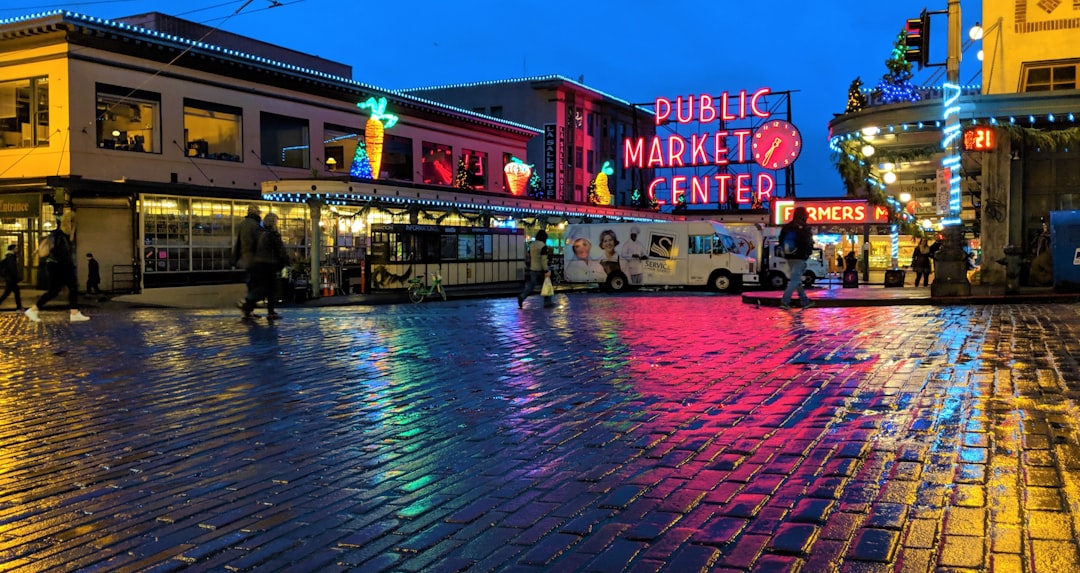Washington's Unsafe Harbor Law
How underfunding a law intended to help child trafficking survivors was destined to fail

Crosscut published a story earlier this week about Washington State’s failed “Safe Harbor” law, HB 1775 — a law intended to create safe receiving centers for trafficked youth.
When HB 1775’s “Safe Harbor” bill was first being drafted, I voiced concerns for the amount of money earmarked for the receiving centers. I also highlighted that the bill focused almost entirely on the needs of teenage survivors, with very little concern or clauses to address the lack of resources and wraparound holistic care for younger survivors. I was condescendingly told "An 8-year-old is developmentally very different than an 18-year-old" — a Human Development 101 fact that I agree with and never tried to contest. My other related concerns were dismissed with a glib “Well, that’s child welfare’s job. Foster care will take care of them.”
As a child trafficking survivor, having firsthand experience with our child welfare systems, this response frustrated me immensely because it simply isn’t true. Hypothetically, if it was true, and DCYF had no problems providing adequate care, protection, housing, safety, legal aid, transportation, healthcare, counseling, education, etc — if DCYF already adequately provided these basic needs which are proven to prevent human trafficking, we wouldn’t need legislation to provide addended services for teenagers.
My point is that as we all know $500,000 is not enough money to fulfill the requirements that this RFP demands. Like child welfare and foster care, underfunding services like HB 1775’s Safe Harbor receiving centers inevitably attracts a pool of candidates who are willing to accept lower pay because they are not there for the low salary — their ulterior motive is to be around the most vulnerable populations. Low funding for youth services and other social programs attracts predators who want to have access to vulnerable clients.
Having worked in direct services for 20 years, oftentimes as on-call overnight youth shelter staff, as well as another state’s version of Washington’s Safe Harbor receiving centers, I can confidently say that low pay for staff as a result of low funding for programs, attracts three types of applicants:
1. Survivors with lived experience who are willing to accept low pay because they want to help survivor siblings not go through what they did
2. Applicants who are dangerously unqualified
3. Candidates who are predators and want access to the most vulnerable populations
The Hippocratic Oath is a pledge for healthcare providers to first, do no harm. Having worked in this field as a survivor since the 2000s, the anti-trafficking movement would benefit greatly from a similar slogan.
I want to point out the disparity in the Safe Harbor RFP offering $500,000 to provide care to extremely traumatized youth. Ask any service provider who trusts you enough to answer honestly and openly, and they’ll tell you that it is not enough money to fulfill the stipulations.
Compare $500,000 to provide safe care to youth across half the state, to how much money is budgeted to incarcerate youth and adults in King County alone — $380.2 million.
https://aqua.kingcounty.gov/council/agendas/Budget_Safe/20221013-Panel3-additional.pdf
I’m not a mathematician or an economist, but $380.2 million is a lot more than $500 thousand. This disparity is unacceptable. And it is an indicator of the priorities in Washington State, King County, and Seattle. You don’t build a new juvenile detention center and fund King County’s Adult and Juvenile Detention budget with $380.2 million unless you prefer to incarcerate people, rather than rehabilitating or helping them in comprehensive, evidence-based, trauma-informed, survivor-centered, anti-racist, harm reduction, and effective ways. I say this as someone whose little sister is a survivor who was almost killed at Purdy after she was sentenced for defending herself against her trafficker. He pressed charges, and she was sentenced to prison. She never pressed charges against him for the dozens of times he abused her to the point of hospitalization. It’s a very long story, but suffice to say, the DOC made it completely impossible for me to help her and it led to her child being given to a trafficker. Again, it’s a very long story that I’m happy to discuss as a case study and explain why I have over $10,000 in credit card debt trying to fix the abuse and harm that Washington State and the DOC caused to her infant.
This is an issue that impacts my family personally, so I’m relieved that we’re finally discussing it candidly. It’s also an issue that impacted me as a homeless teenage survivor in Washington who could not ask for help because I would have been arrested as a runaway. The harmful ways in which the Becca Bill was written and implemented is another related example.
HB 1775’s Safe Harbor law could have been good legislation. The
Becca Bill could have been good legislation. But like most legislation, the victims who are actually impacted by these laws are rarely consulted. And if we are consulted, we are rarely listened to. Otherwise, very preventable harms could be avoided. Our human-made problems require human-made solutions.
The first and simplest solution is choosing to fund services like the Safe Harbor receiving centers for trafficked youth more than prisons. Because the math is backwards — it means that we are investing more money in perpetrators than victims and their real, tangible needs to physically survive.


